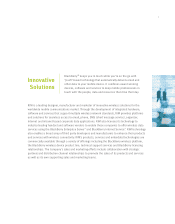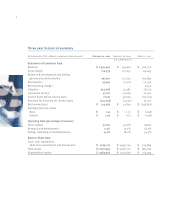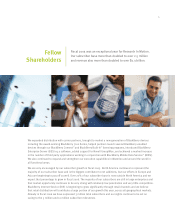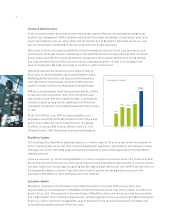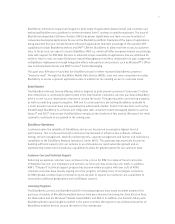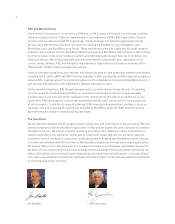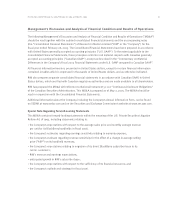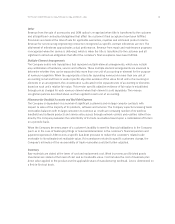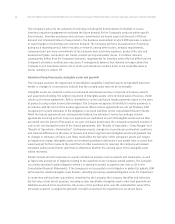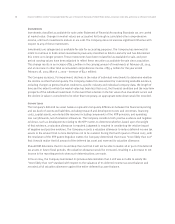Blackberry 2005 Annual Report Download - page 13
Download and view the complete annual report
Please find page 13 of the 2005 Blackberry annual report below. You can navigate through the pages in the report by either clicking on the pages listed below, or by using the keyword search tool below to find specific information within the annual report.
11
Overview
RIM is a leading designer, manufacturer and marketer of innovative wireless solutions for the worldwide
mobile communications market. Through the development of integrated hardware, software and services that
support multiple wireless network standards, RIM provides platforms and solutions for seamless access to
email, phone, SMS (short message service), personal organizer, Internet and intranet-based corporate data
applications. RIM also licenses its technology to handset and software vendors to enable these companies to
offer wireless data services using the BlackBerry Enterprise Server (“BES”) and BlackBerry Internet Service
(“BIS”). RIM technology also enables a broad array of third-party developers and manufacturers to enhance
their products and services with wireless connectivity. RIM’s products, services and embedded technologies
are commercially available through a variety of offerings including the BlackBerry wireless platform, technical
support services and BlackBerry licensing relationships. The Company’s sales and marketing efforts include
collaboration with strategic partners and distribution channel relationships to promote the sales of its
products and services as well as its own supporting sales and marketing teams.
Sources of Revenue
RIM’s primary revenue stream is its BlackBerry wireless solution, which includes sales of wireless handhelds,
software and service. The BlackBerry wireless solution provides users with a wireless extension of their work
and personal email accounts, including Microsoft®Outlook®
, Lotus®Notes, MSN®
/Hotmail, Novell GroupWise
and POP3/ISP email.
RIM generates revenues from sales of BlackBerry wireless handhelds, which provide users with the ability to
send and receive wireless messages and data, and which integrate a mobile phone with other wireless data.
RIM’s BlackBerry wireless handhelds also incorporate a personal organizer including contact and calendar
functionality, which can synchronize with the user’s desktop PIM (personal information management) system,
and have web-browsing capability.
RIM generates revenues from service billings to its BlackBerry subscriber base in one of two forms:
(i) a monthly infrastructure access (“relay”) fee to a carrier/distributor where a carrier or other distributor
bills the BlackBerry subscriber; or (ii) a monthly service fee charged by RIM directly to end-customers,
where RIM has purchased airtime from certain carriers and resold it directly to BlackBerry subscribers.
An important part of RIM’s BlackBerry enterprise wireless solution is the software that is installed on
desktop computers and/or at the corporate server level. Software revenues include fees from (i) licensing
RIM’s BES software; (ii) client access licenses (“CALs”), which are charged for each subscriber using the
BlackBerry service; and (iii) technical support, maintenance and upgrades to software. In addition, the
BlackBerry wireless solution, through its Mobile Data Service functionality, allows users to access data
from their enterprise and intranet applications using the BlackBerry architecture.
RIM’s BlackBerry licensing programs, BlackBerry Connect and BlackBerry Built-In, enable mobile device
manufacturers to equip their handsets with the integrated ability to connect to a BES and are designed to help
provide a more open, global platform and address the distinct needs of end users, IT departments, carriers
and licensees. RIM’s BIS-related services use the same wireless architecture and infrastructure that is being
used by RIM’s enterprise BlackBerry handheld customers.
Revenues are also generated from sales of accessories, repair programs, non-recurring engineering services
(“NRE”) and radio modems to original equipment manufacturers (“OEM radios”).
For the years ended February 26, 2005, February 28, 2004 and March 1, 2003


